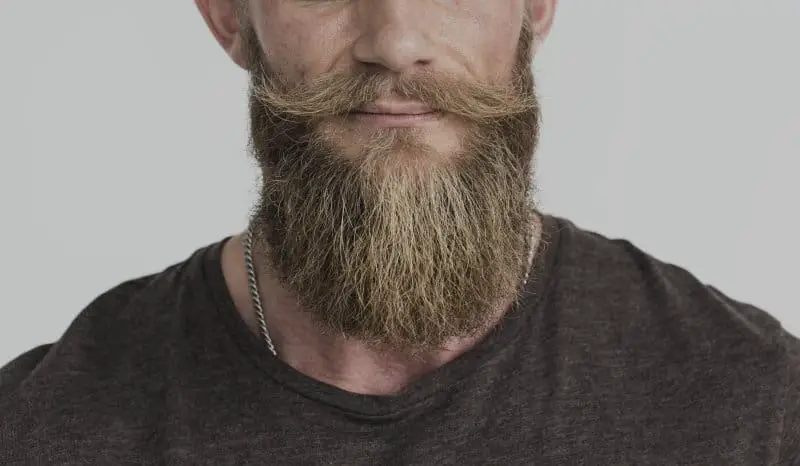As a person who has had a beard since I was very young, it was quickly obvious that growing a beard is extremely dependent on genetics.
After all, all the men in my family were able to grow a beard by their twenties. However, the genetics part of beards is quite ambiguous for many people hoping to grow one.
So, is growing a beard purely genetic? Ideally, genetics plays a primary role in controlling whether you’re going to have a beard or not. It’s also responsible for various aspects of your beard, including its pattern and symmetry. However, genetics isn’t the only factor for growing a beard, as there are some other aspects to consider.
In today’s article, we’ll take a deep dive into the role of genetics in growing a beard as well as a brief overview of other factors that can also contribute to your beard game. Let’s dive in!
What Is the Role of Genetics in Growing a Beard?
Genetics has a primary role in controlling your beard in terms of various aspects. Here’s a quick look at each one of them:
1. Controls the Onset and Terminal Age of Beard Growth
Ideally, your beard will start to kick in during your late adolescence, which is usually around 16 to 22 years old. The beard will start in the form of a few hairs and then thickens into a full beard as time goes on.
In addition to the onset of growth, your genetics also largely control the time at which your beard will stop growing thicker.
2. Control the Direction of Hair Growth and Pattern
We all have different beards in terms of pattern and layout. The rate at which your hair grows back after shaving, your neckline height, the color of your beard, and how early it grays out, as well as the direction at which your hair grows, are all mostly controlled by your genetics.
3. Affect the Symmetry of the Beard
The level of symmetry in your beard and how one direction grows quicker than the other can also be due to your genetics. This also applies to some cases, such as the mustache gap.
If your older family members’ mustaches and beards weren’t connected, there’s a significant chance that yours won’t be connected too.
4. Ethnicities and Races Gene Pools Are Also a Major Factor

Since each ethnicity has its own gene pool, your ethnicity genes can also play a major role in whether you’re going to grow a beard and how it’s going to look.
For example, caucasians are known for having the highest likelihood of growing a thick beard out of all races where Asians, and especially those who have pure Chinese origins, are much less likely to grow a thick beard. All that was based on findings from a 2016 study.
What Are Other Factors That Can Have an Impact on Your Beard?
Although genetics are a major factor in several aspects that you can’t do much about, beard growth isn’t entirely genetic, as there are certain factors that can impact your beard, whether positively or negatively. Let’s check them out:
1. Nutrition and Supplementation
Hair is made of keratin, which is a protein that requires various micronutrients, such as amino acids, minerals, and vitamins so that the body is able to make it.
Of course, taking up all the supplements on its own isn’t enough to make you grow a beard if your genes don’t grow any.
However, even if you have decent beard genes, lack of nutrition can heavily slow down your beard growth and result in thin hairs with a patchy beard.
2. Stress and Sleep
Various studies have associated the rate of hair growth cycle with stress. Even if you have good genetics, the lack of stress, especially when compared with sleep deprivation can make your hair fall, including your beard hair.
3. Hormonal Balance
Testosterone is the hormone responsible for secondary male attributes, such as deep voice and facial hair growth.
Although not necessarily the case, those with thicker beards have a higher average testosterone or androgens level. If you’re suffering from hormonal imbalance, your beard growth will be most likely impacted.
In fact, women who suffer from a hormonal imbalance that results in a higher level of testosterone will develop hairs in the chin, which is known as “hirsutism”.
4. Health Conditions
Lastly, there are plenty of health conditions that can have an impact on your facial hair. For example, if you have autoimmune issues and suffer from alopecia, your beard might look patchy or fall off completely even if you have good beard genes.
On the other hand, different types of tumors in the adrenal gland can also affect testosterone level, and therefore change the rate at which your beard grows.
How to Maximize The Rate of Beard Growth

The rate of beard growth exists on a spectrum rather than a rough number. In other words, you may have good beard genes but your patchiness and low density are caused by poor nutrition or circulation to provide your hairs with nutrients to grow. Here are some of the methods to improve your beard growth rate:
- Prescription Hair Growth Products: There are plenty of hair growth products on the market. However, the most effective ones are those who use minoxidil as an active ingredient.
Those products exist in the form of serums, spray, shampoos, and more. However, they’re prescription-only medications, so you have to contact your dermatologist to prescribe them to you.
- Vitamins and Supplements: You need to provide your beard with amino acids necessary to build hair. Eating protein-rich foods like meat, fish, eggs, chickens, tofu, legumes, etc is essential for beard growth. You should also make sure that your body gets all its daily requirements of essential beard vitamins such as Vitamin A, B, C, and E.
In addition to vitamins, you also need essential minerals necessary for hair growth that are found in meat, fruits, and vegetables, including Iron, Magnesium, Zinc, and Selenium.
- Beard Oils: Beard oils are among the best topical methods to stimulate hair growth. They also double as a coat to protect the beard from humidity and give it a shiny look. Here’s how to make your DIY beard oils at home!
- Beard Rollers: Beard rollers are small devices that manually stimulate the blood circulation in the beard area in order to allow more nutrition to reach your beard hair follicles and grow longer.
Methods to Overcome Poor Beard Genetics

Even if your genes are a major barrier that prevents you completely from enjoying a thick beard, there are plenty of advanced techniques that you can utilize to rock a nice stubble.
These techniques include beard microblading, which is basically tattoos of hair strokes to make your beard fuller as well as beard transplants that work using the same concept of hair transplants.
The Bottom Line
With that said, this guide about the role of genetics in growing a beard comes to an end. The key takeaway of all this is that genetics plays a major, primary role in growing a beard but it’s not the only factor to consider.
Hormonal imbalance, proper nutrition, and other factors, such as certain diseases, can also increase or decrease the rate at which your beard grows. Click here to find out why some guys can’t grow a beard after 25.

